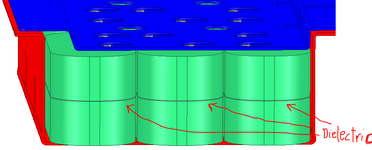dome_palp
Newbie level 4
Hello everyone,
I need a suggestion about how to perform an accurate electromagnetic FEM simulation of capacitors in the frequency domain, in order to extract the impedance vs frequency curve, calculate the power losses at different frequencies in a wide frequency range (100Hz-->10MHz), map the 3D losses distribution and so detect the hotspot accurately by thermal simulation.
I made trials using Ansys Electronics tools like Q3D, but this software is not able to consider all the electromagnetic interactions correctly, in particular the displacement current.
Do you have any kind of experience in the EM model of capacitors in the frequency domain? If yes, please suggest a good general procedure to solve this kind of problems with capacitors.
Thanks in advance !
I need a suggestion about how to perform an accurate electromagnetic FEM simulation of capacitors in the frequency domain, in order to extract the impedance vs frequency curve, calculate the power losses at different frequencies in a wide frequency range (100Hz-->10MHz), map the 3D losses distribution and so detect the hotspot accurately by thermal simulation.
I made trials using Ansys Electronics tools like Q3D, but this software is not able to consider all the electromagnetic interactions correctly, in particular the displacement current.
Do you have any kind of experience in the EM model of capacitors in the frequency domain? If yes, please suggest a good general procedure to solve this kind of problems with capacitors.
Thanks in advance !
